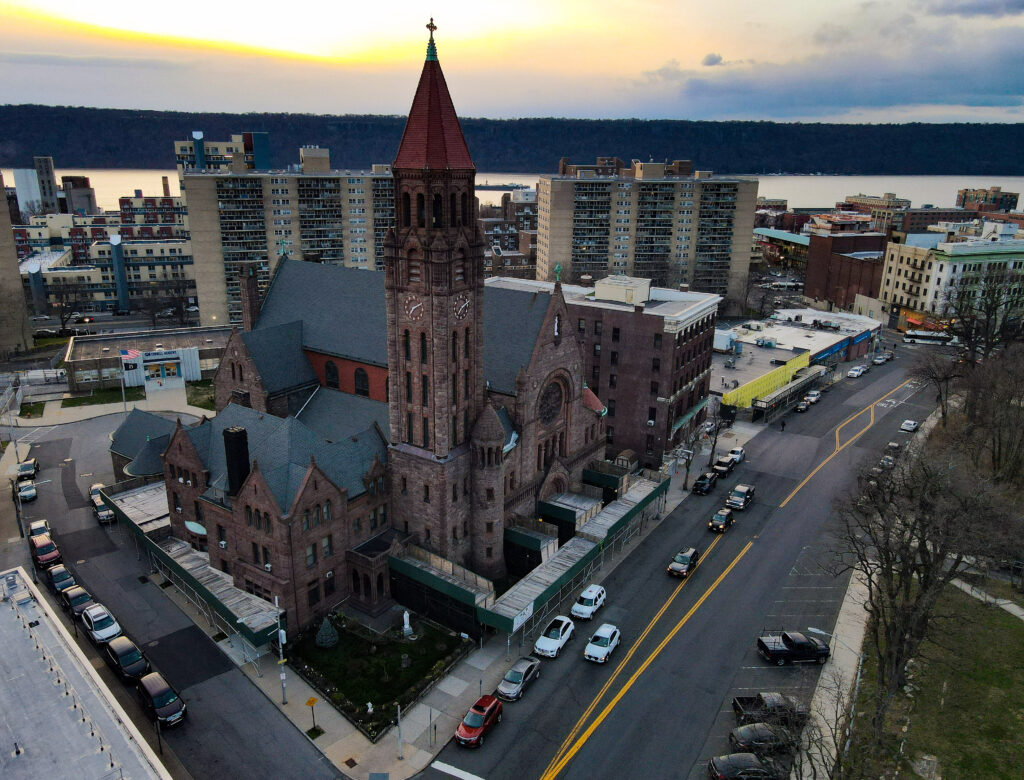
By Patricia Vaccarino
Katherine Sheedy attended noon mass every day at St. Mary’s Church in Yonkers. Going to church was more than a religious rite. It was how she expressed herself—Irish Catholic, good natured and kind, except when she was vexed by something she did not understand. And she did not understand me, her rebellious granddaughter, the third in line.
Among her ten grandchildren, I was the troublemaker, the one who questioned everything, especially the holiest tenets of the Roman Catholic Church. Hellbent on fixing injustice in the world, I didn’t like hypocrisy, dishonesty and unfairness back then, and I still don’t like those things now. My grandmother told me she prayed for me, a notion I found strange, because I thought I didn’t need anyone’s prayers, not even my own.
She dressed up to go to church and wore a small hat and gloves, even in warm weather. Fastidious with her appearance, vain and shallow, she wore perfectly applied pink lipstick and frequently powdered her nose. Her pink lips were enhanced by her silver pageboy bob and intense blue eyes. Looking well put together made people think everything was okay, even when it wasn’t.
As a toddler, she lost two sisters to the Great Influenza. Her husband and daughter were both afflicted with schizophrenia. Later, she lost her son. She lost others, too, but she never lost her heart. Laughter concealed her sadness, or maybe she smiled through her tears. I don’t know what she really thought about. She talked about things and people, not issues and ideas.
Not dumb but she was definitely unschooled in the ways of how the real world functioned outside of the narrow ken between her tenement in South Yonkers and St. Mary’s Church. She once told me she voted for President John F. Kennedy because he was Irish Catholic. She was uneducated and deeply religious. I was embarrassed of her and kept my distance.
After mass she went to St. Joseph’s Nursing Home to listen to the old timers, the sick and the shut ins. She used to tell me the Irish had compassion, that they cared about other people, even people they didn’t know because everyone had it hard, and no one gets out of this world alive.
The last time I saw her was at St. Joseph’s Nursing Home, in the very place where she had volunteered for thirty years. Now I was listening to her the way she used to listen to the sick and shut ins. She wore pink sweatpants and a matching sweatshirt. Her tiny feet were ensconced in pristine pink and white athletic shoes. She told me she had just come in from jogging and pointed outside her window below to a circular track.
She could be very funny and I knew she played pranks on people, but I had no reason not to believe her. She panted a bit and looked flushed. A nurse shook her head and told me otherwise. My grandmother had not left the nursing home that day or any other day within the past few weeks. I don’t think she was lying to me. I believe, in her mind, she had jogged the entire course.
I was three thousand miles away when she died. I saw her face as surely as I can see it now, bathed in red light from rows of red glass votive candles at St. Mary’s Church. Every day she symbolically lit a candle for each of her grandchildren and said a prayer. Some need more prayers than others, she had told me with a wink and a grin. I was her third candle.
I guess I believed her story about the candles because through the years, I found myself caring about what happens to other people, even if they are far off in the distance, and not at all connected to my immediate world. I’ll also confess to being somewhat fastidious with my appearance, even at the risk of appearing vain and shallow. Looking well put together does make people think everything is okay, even when it’s not.
Every so often she shows up in my dreams, usually early in the morning when my bedroom is filled with blue light—the time before the sun comes up and there are no shadows. When I fully wake, the sunburn on my heart is chafed from losing her again. But I’ve become too much of a believer to think she has been stopped by death.
This story appeared online at https://www.prforpeople.com/life-style/spirituality/notes-working-class-third-candle. It was reprinted with the permission of Patricia Vaccarino, a Yonkers native who wrote The Yonkers Trilogy, historical fiction, which takes place in Yonkers from 1969-73.





